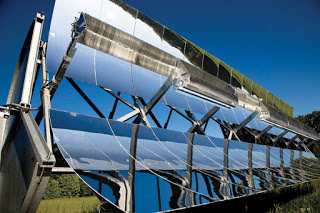More Capacity Comes with Significant Changes for Solar Developers in North Carolina
Posted in Blog article
North Carolina, the nation’s second-leading state for solar, passed a law last week that could fundamentally change how developers operate in the State. Session Law 2017-192 titled Competitive Energy Solutions for NC passed with bipartisan support and was signed into law by Governor Roy Cooper last Thursday. While the Law has garnered attention for its 18-month moratorium on wind permits, solar developers should focus instead on the many other changes that will come from the Law. Three of the most significant changes are discussed below.
Part I of the Law amends North Carolina’s implementing rules under the Public Utilities Regulatory Policies Act (PURPA). Under PURPA, utilities are required to accept power and capacity from small power producers that meet certain eligibility criteria created by states. Under the new Law, eligibility for PURPA standard contracts is constricted, extending only to those power producers that offer a design capacity of up to 1 megawatt (down from the previous ceiling of 5 megawatts). Additionally, once 100 megawatts have been contracted, the standard contract size eligibility will be reduce to 100 kilowatts. Moreover, the term of the standard power purchase agreements (PPAs) included in utilities’ tariffs is now capped at 10 years (down from a previous 15 years). These changes could harm small developers that have relied on standard contracts and longer terms to facilitate investment and project financing.
For those power producers that do not qualify for eligibility for the standard contract, outside of a new competitive procurement process that is described below, PPAs will be established through good faith negotiations with the utilities. Those PPAs cannot have fixed rates beyond a five-year term. This five-year limit on PPA prices could impede the ability of developers to attract tax equity investment and long-term debt financing for their projects.
Fortunately, there is an alternative mechanism to obtain a longer pricing commitment. Part II of the Law likely has the most positive impact on developers in North Carolina by directing utilities to issue requests for proposals to procure “energy and capacity from renewable energy facilities in the aggregate amount of 2,660 [megawatts]” (or 2.66 gigawatts) over an initial 45-month term. Only facilities with a nameplate capacity rating of 80 megawatts (the maximum size for a renewable project under PURPA) or less will be included in the aggregate amount.
Subject to oversight by the North Carolina Utilities Commission, utilities in the State may jointly or individually implement the procurement requirements set forth in the Law. Under the procurement scheme, utilities can satisfy the requirements by acquiring renewable assets from third party developers, by self-building renewable assets up to 30% of the requirements or by purchasing the output from independent developers for a term initially expected to be 20 years. Furthermore, utilities will have flexibility in determining the location and allocated amount of the procurement in their respective balancing authority areas. Following the initial 45-month procurement period, the Law directs the Utilities Commission to further explore procurement of additional renewable energy facilities.
The Law also includes the Distributed Resources Access Act that “encourage[s] the leasing of solar energy facilities for retail customers and subscription to shared community solar energy facilities.” A key part of the Act is the enabling of third-party leasing arrangements for solar facilities for the first time in North Carolina. The Act sets up a legal framework within which third-party leasing arrangements will be regulated and allows for utilities and municipal electric providers to develop leasing programs under similar rules.
The Act also requires utilities in the State to develop community solar programs for their retail customers. To account for increased distributed generation under the Act, the Utilities Commission is directed to revise its net metering rates.
Despite its many changes, the industry appears optimistic that Session Law 2017-192 will allow North Carolina to continue as a leader in solar. The Law can be read in its entirety on the North Carolina General Assembly website.





